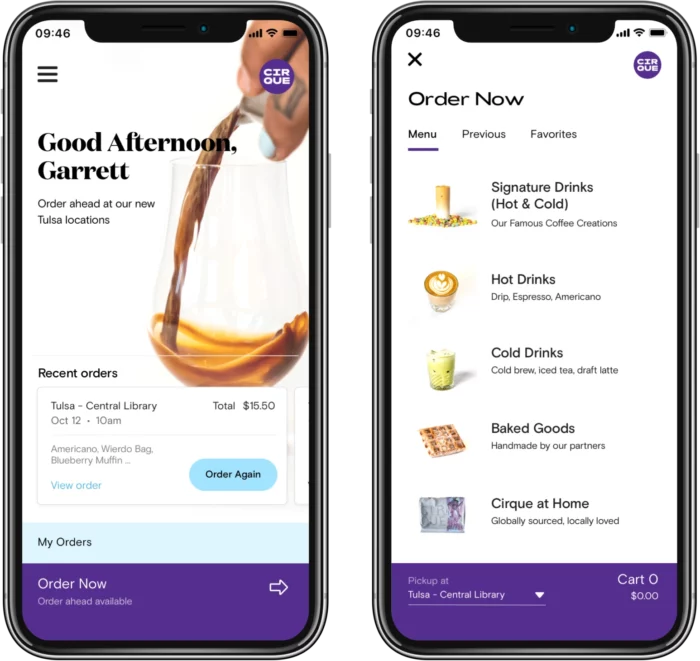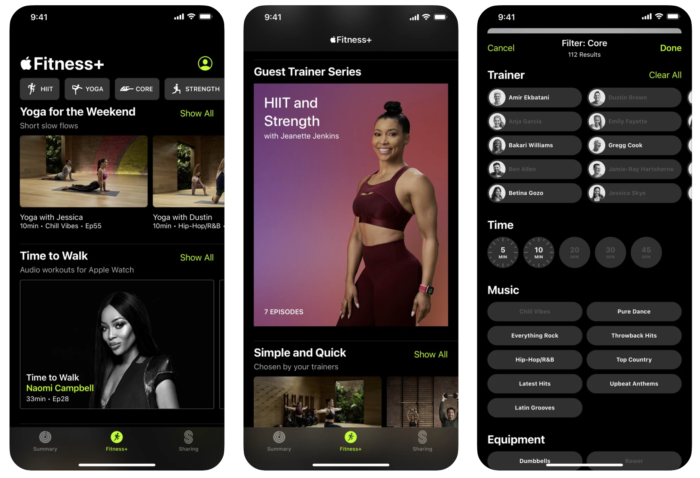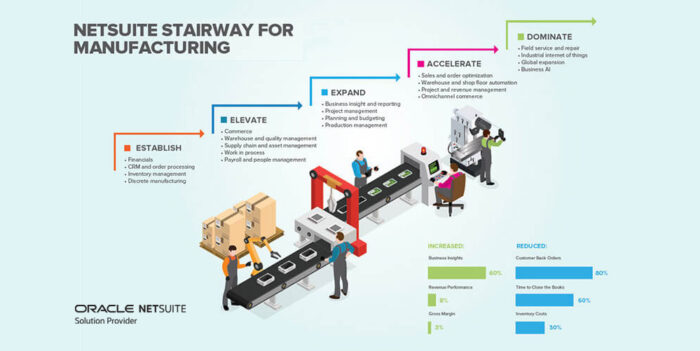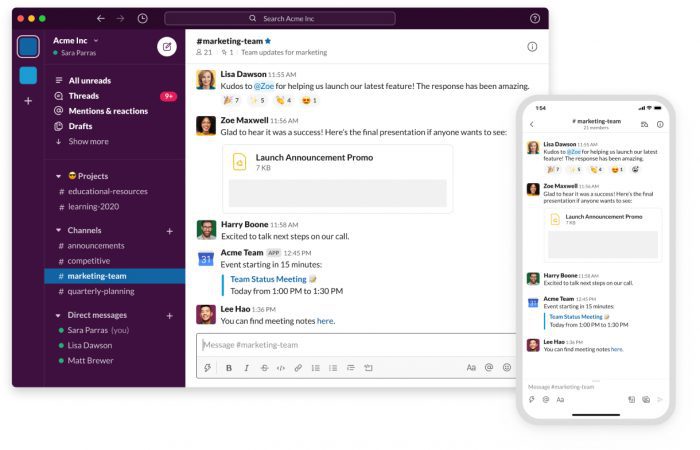What is Digital Transformation? A 2022 Guide
The idea of digital transformation in business encompasses a variety of looks – at its core, this concept refers to the adoption of technology to enhance one or more business processes through digital innovation.
Here, we’re going to explain why digital transformation is important for businesses by looking at how it helps accomplish goals, identifying where it’s used, and covering some examples that showcase successful initiatives.
How digital transformation helps businesses accomplish their goals
Successful digital transformation is much more than just bringing a new piece of equipment into a business or buying a sophisticated piece of software – there needs to be successful adoption as well as a measurable, positive impact.

Source: Tima Miroshnichenko on Pexels
For example, let’s say that a company adopted a new fintech solution that can handle all of their financial processes from accounts payable, processing invoices, payroll, and beyond.
But instead of configuring the system to take advantage of all the system’s features, the business leaves some elements disconnected such as the accounts they use to process payroll and pay vendors. They continue to use fragmented systems to manage certain financial processes such that the company experiences no benefit from their new technology that offers digital innovation.
All kinds of problems can manifest when your “new and improved” system is only the former – assuming a good solution is in place, you need to ensure users are equipped with everything they need to make the transition.
Providing digital transformation through an app
Depending on the nature of a business, efforts need to focus on appropriate categories relevant to its model. A few ways that companies benefit from effectively using apps as part of a digital transformation process include:
- Better engagement with customers through platforms that offer communication features and feedback tools.
- Increased conversion by making information and products accessible through an app – when compared to their mobile website counterparts – eCommerce apps convert around 157% better.
- Faster delivery of content. Whatever you provide, an engaging app keeps you connected with your users which you can use to deliver personalized messaging. Just don’t abuse it!
- Using artificial intelligence (AI) and machine learning (ML) to analyze and interpret datasets. This could be anything from a heat map to understand how people move about a physical location (like a retail store) to uncovering the spending patterns of individual customers.
- Increase collaboration between team members with integrated communication. While solutions like Slack or Microsoft are excellent platforms for many businesses, many businesses such as virtual healthcare providers and finance require compliant, integrated communication solutions.
Leveraging technology as part of a digital transformation is a journey that should seek to enhance performance in at least one area of operation although ideal efforts effectively bridge multiple processes with technology as part of a multi-faceted solution.
In most (but not all) cases, a new digital product like a website or an app has the potential to improve business efficiency by affecting more than one department or process.

In retail, a common example would be an inventory database that’s connected to a business’s website, app, and POS. When properly integrated, this can serve to help businesses both sell inventory over the web as well as help with back-of-house operations like directly interfacing with the supply chain and managing inventory.
Of course, there are a vast variety of businesses spanning a breadth of industries which is why it’s important to assess each business on a case-by-case basis.
You can’t assume that just because something seemingly works for a similar business it will produce the same results for you.
What are some specific areas that digital transformation helps improve?
Businesses spanning every industry have substantial opportunities to both genuinely transform and optimize existing processes by adopting new technology.
To be more specific, a few areas where digital innovation makes a significant contribution to business are explained below.
Applying digital innovation to sales and marketing
Digital transformation is being used to furnish an effective customer experience through marketing and sales.

The easier it is for customers to find products and services like in the Cirque Coffee app pictured above, the more likely they are to buy. Websites and mobile apps that blend useful information with digital elements that make navigation intuitive allow visitors to seamlessly browse which is vital for new business.
Converting these individuals into paying customers relies on empathy communicated through marketing collateral – while some customers are easily sold, many are more inclined to do some homework before making a purchase.

Source: dole777 on Unsplash
This is why it’s important that marketers employ a variety of distribution methods to maximize the exposure of their products on multiple digital channels.
One of the most popular ways that companies get attention is through social media platforms like Facebook and Instagram to get eyes on their product considering the average US citizen reportedly spends just over two hours a day on social media. Through paid advertisements, digital marketers can target the proper audience to drop posts into the news feeds of potential buyers.
In fact, simply becoming active on social media can play a major role in an overall digital transformation process!

Why buy just one end table with an awkward form factor when you can get a whole set? | Source: Amazon
Further adding AI-based systems for product recommendations which reveal additional purchasing options that regularly entice the customer to spend more much like Amazon has been doing for some time.
Once the sale is complete, businesses that continue to send personalized promotional content to the customer’s email or through push notifications will tend to keep customers engaged which typically results in returning business.

Today, chatbots. Tomorrow, wise-cracking little droids that follow you everywhere. | Source: Jason Leung on Unsplash
One last useful feature that’s seen in great digital transformation efforts is the use of chatbots for everything from sales to customer service.
These systems can help answer questions leading up to a sale as well as serve as the first point of contact in resolving customer service issues. Often, a well-designed chatbot can intelligently handle many requests that typically require human interaction which helps businesses save on labor expenses.
A glance at digital transformation in the supply chain
Many SMEs and large corporations in industries like construction, healthcare, agriculture, and more are digitizing efforts by integrating intelligent systems on the backend for supply chain management.

Source: Michoff on Pixabay
Advances in supply-chain technologies that bring intelligence to sourcing and moving items help in areas like improving digital fulfillment, shedding like on risk optimization, and enhancing corporate control.
For example, supply chain management systems are using a combination of AI and ML in ERP systems to help with demand forecasting by analyzing current buying trends and comparing them against future projections.
These solutions can help in multiple areas by connecting with vendors to automatically procure materials, determine outcomes of certain purchasing configurations to uncover potential risks, rework logistics with shipping and receiving to be more efficient, and much more.
Digital transformation in the restaurant industry
In the restaurant industry, businesses were once able to thrive by relying on a flow of both dine-in and carry-out customers with virtually no modern technology but a lot has changed.

The pandemic served as a catalyst for rapid evolution in the restaurant industry and customer expectations followed suit.
Now, many restaurants offer web-based ordering, either through a website or an app, as well as delivery options from third-party providers like DoorDash, Uber Eats, Postmates, and others.
By adopting solutions that allow customers to place digital orders, speed and accuracy increase which allows the restaurant to more efficiently process orders as well as reduce errors. Just like anything else, it’s important to pay attention to your products to keep issues at bay.
When all goes well, most delivery services prove to be extremely effective at increasing sales as have good mobile ordering apps that offer loyalty rewards.
Digital transformation in fitness
To shift gears, digital innovation is being creatively applied to products like bicycles to track, analyze, and gamify riding.

Source: Dimon Blr on Unsplash
Following suit with fitness apps, solutions like the Huffy Biking App are bringing modern technology into the mix with the intent of making rides more engaging by offering challenges and rewards.
Beyond exercise, gamification serves to increase user motivation, thus increasing the amount of time they spend and the effort they exert on any given platform. By providing special offers and other promotions, users are more likely to spend money which means more profit for the company.
A look at apps that offer digital innovation
Many apps on the market right now serve as excellent examples of what digital transformation can look like in their respective market.
1. Banking and a look at Chime
Banking is one industry where technology has played a massive role in each department, making everything happen faster with more accuracy.
 Source: Chime
Source: Chime
For core banking services like account hosting via checking and savings programs, we’ve found that apps can essentially replace brick-and-mortar locations for most services as is the case with Chime bank.
Initially founded in 2013, the app and web platform allow customers to manage their finances as they would with any other bank but without the need to perform cashless tasks in person.
Chime demonstrates that simple banking can be accomplished entirely through a well-designed app.
2. Healthcare apps are transforming people’s lives in a variety of formats
Like banking, healthcare is one area of business where digital transformation is occurring everywhere.

Source: App Store
There are apps like sophisticated booking apps that expedite patient intake and scheduling, eHealth apps that monitor patient activity and vitals, apps that tie into a facility’s EMR system, as well as a ton of fitness apps in circulation like Apple Fitness pictured above.
A great example of an app that has made an impact on digital transformation in healthcare is Medscape which is one of the most downloaded medical apps on the App Store.

Source: App Store
Made for clinicians, Medscape puts information at the fingertips of medical providers by linking them with medical news in 34 fields of medicine.
Medscape also provides a clinical reference section that can be used to research information on all kinds of conditions which helps professionals connect the dots when determining drug and other treatment options.
3. Transforming manufacturing with apps
Apps contribute to modern manufacturing in a variety of different ways. Manufacturing is one area where inventory management is a pressing issue which apps like NetSuite Manufacturing Edition from Oracle.

Source: Intoday
This solution is aimed to solve by providing tools for tracking products and managing warehouse functions. Powerful dashboards provide insights that allow businesses to make decisions quicker by tying in supply chain data from vendors.
Manufacturing is one area where there are immense opportunities for machine learning (ML) and artificial intelligence (AI) apps.
For example, computer vision could aid some operations significantly by providing a mechanism to help categorize items produced which aids in the documentation process. It can also help track, document, and analyze what it sees like objects on an assembly line.
Truly, computer vision has a ton of applications in manufacturing as it can also be used to optimize production by playing a role in QA, just to name one of many examples.
4. Reaching more customers in retail and eCommerce
Online shopping has become the most prevalent way that people buy goods and services so it’s an ideal place to look for answers with regards to, “What is digital transformation?”

Source: Forbes
Stores that formerly relied on people walking through the doors greatly increase their sales by furnishing an app or a web platform. Now, some formerly online-only locations like Amazon are applying what they’ve learned from their digital business to models like Amazon Go.
While figures vary, it’s been observed that more than half of smartphone owners make purchases using a mobile device. Retail has observed significant digital transformation as virtually every successful business around the world uses a mobile app (or at least a website) to sell products and services.
Brick and mortar locations also benefit from integrating systems like QR codes, geofencing, and Bluetooth beacons to bridge in-person shopping with online platforms. To “make it” as a successful online retail business, an app is a necessary component.
5. Telecommunications is all app-based
Email is dead and so is the landline.

This is one of our go-to’s here at Blue Label. | Source: Slack
These lingering technologies serve little purpose today outside of being a formality with solutions like Slack, Facebook Messenger, WhatsApp, and the many others on the market towering over traditional telecom.
Overall, communication has transformed more than anything over the last 20 years as it is an integral part of virtually every digital transformation endeavor. With communication shifting to apps, we’ve come to expect that we can not only contact people we know in an instant but also communicate with businesses.
Companies need to recognize that communication tools whether plugins or standalone apps are how customers prefer to communicate. Apps often “do it better” than traditional calling solutions so businesses must look to options like Twilio and other tools that can be used to improve communications with modern interfaces.
We are equipped to help with all manners of digital transformation
The key to a successful digital transformation endeavor is research and planning, which happens to be our forte.
For more information or to discuss your idea, get in touch!









